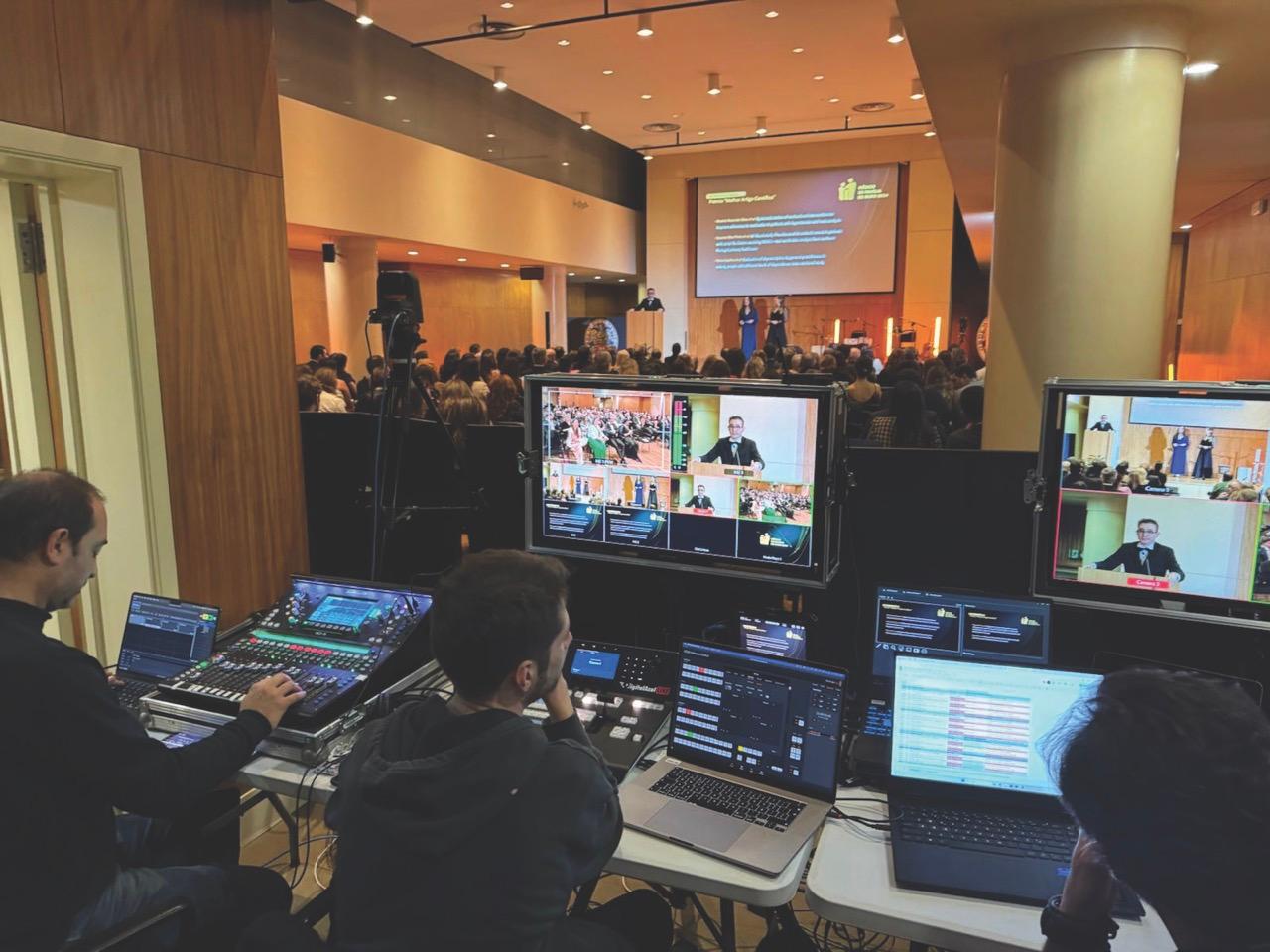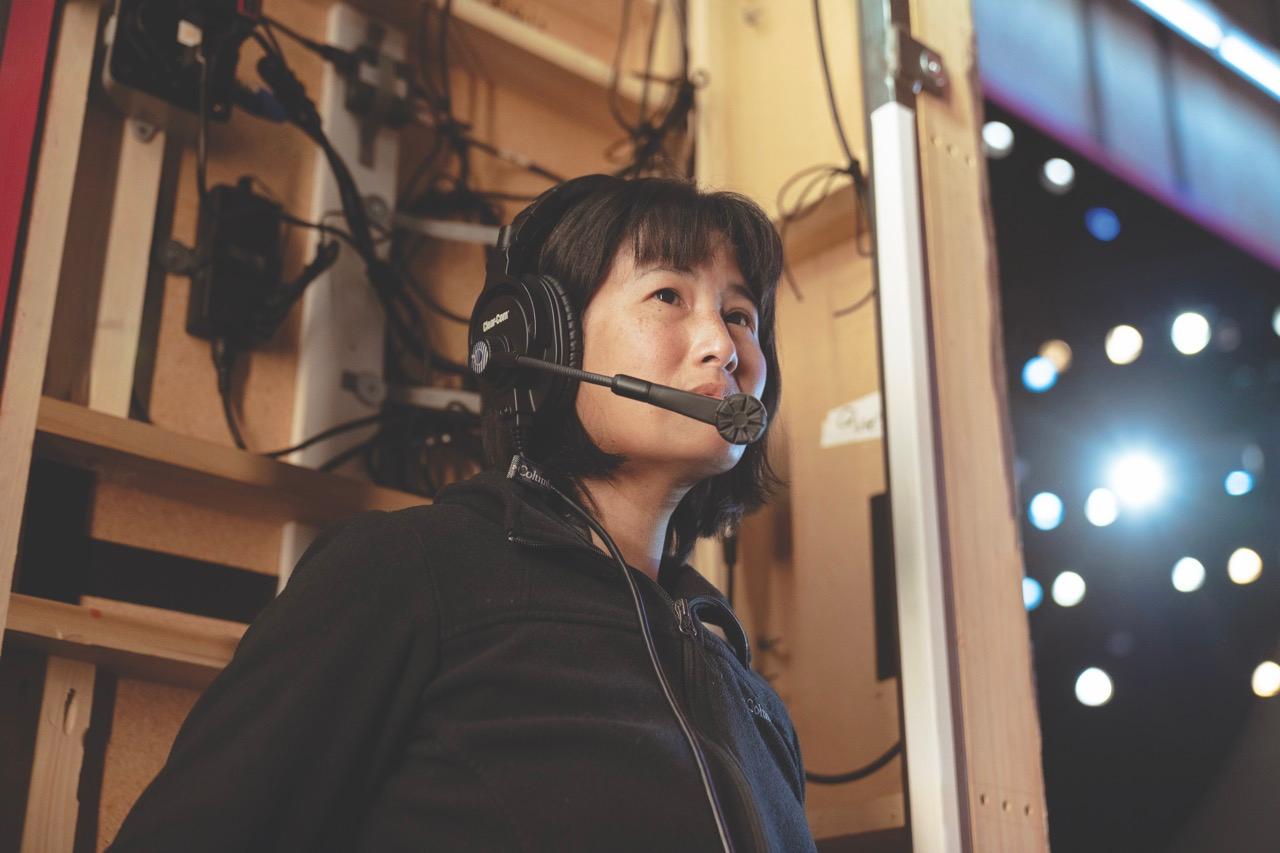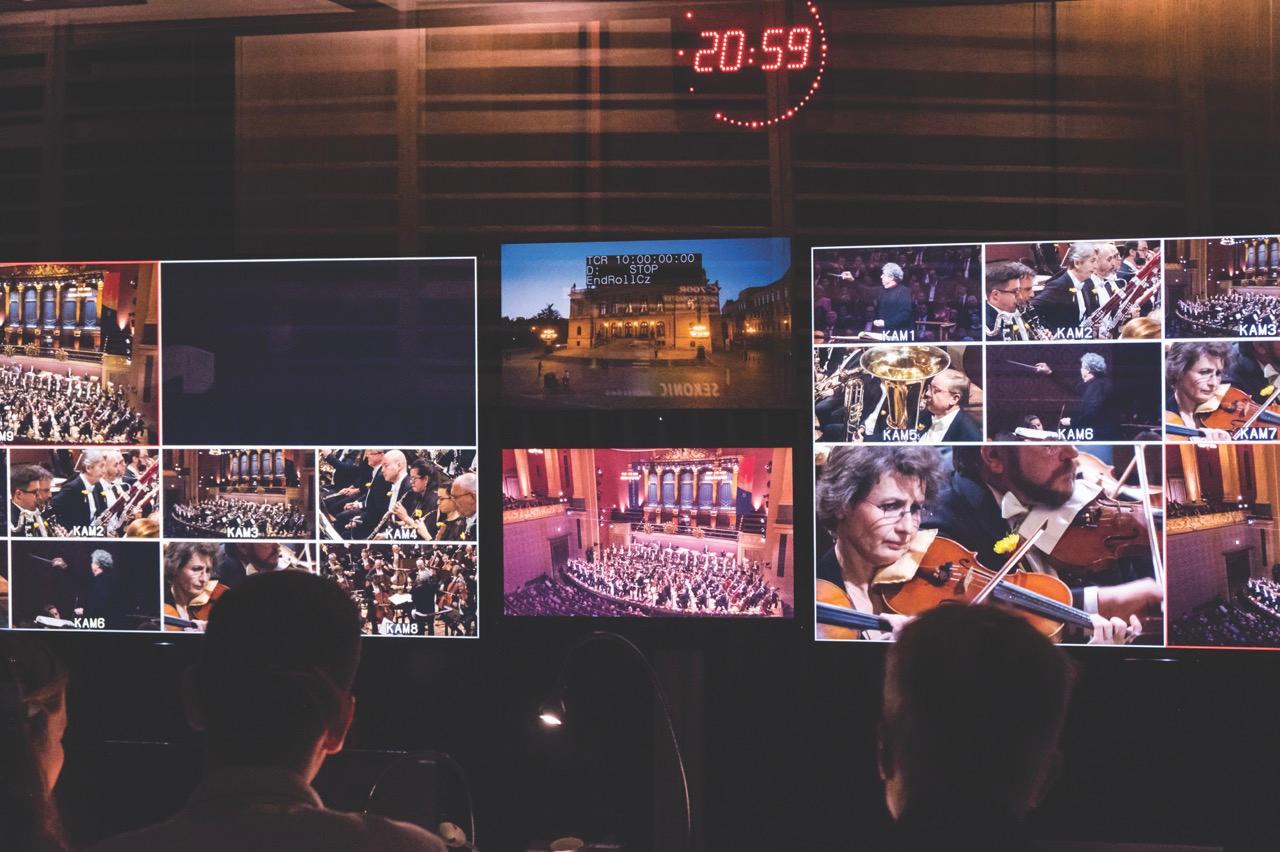
A meeting of broadcast, cine and AV technologies
Broadcast, cine and AV technologies are converging, transforming the way content is delivered across the corporate, education and live event sectors. The increasing adoption of broadcast-grade technology is providing AV users with better production quality and reliability, standards-based simplicity and the ability to serve live and remote audiences equally well

The audio-visual market dwarfs broadcast and film – tenfold according to some estimates – and is developing a healthy appetite for broadcast-type technology. “Our latest Industry Outlook and Trends Analysis forecast revealed that broadcast AV solutions have become the second-largest segment of expenditure in the AV industry, overtaking digital signage, with $44.2 billion global revenue estimated in 2025,” says Sean Wargo, VP of market intelligence at the pro AV trade association Avixa.
Not only is the AV market bigger, it is also more robust. While broadcasters cut each other’s throats as they compete for stagnant ad revenues with social media and other online rivals, AV continually seems to find new applications and customers. No wonder it is attracting broadcast OEMs. Fortunately for them, the attraction is mutual.
“The pro AV market spans a broad range of applications, from rental and staging for concerts, festivals and stadiums through to corporate environments for AGMs, product launches and multi-site conferencing, even into education, where lecture capture and hybrid learning have become mainstream,” explains Darren Gosney, product specialist manager at Blackmagic Design. “Increasingly, pro AV installations are borrowing from the broadcast playbook, utilising the same tools and techniques to enhance production quality, improve reliability and maintain consistent workflows.”
“It’s not uncommon to find nearly any technology you’d find on-set or in studio in an AV environment,” says Andy Bellamy, EMEA technical director at AJA Video Systems. “Depending on the AV application, you might find cameras, switchers, mixers, routers, signal converters, video recorders, streaming and encoding/decoding devices, and editing and graphics tools, just to name a few.”
“Technologies such as IP-based workflows, PTZ cameras, cloud production tools and video-over-IP protocols like NDI and SMPTE ST 2110 are already well integrated into AV environments,” adds Wargo. “We also see strong adoption of real-time graphics engines and audio-over-IP solutions like Dante. Looking ahead, AI-driven automation, XR and spatial audio are poised to further bridge the gap between broadcast and AV.”
The overlap is hardly surprising, considering that broadcasters and AV users are increasingly trying to do much the same thing. “Conceptually, there’s no difference between a national broadcaster’s nightly news programme and a corporate’s town hall meeting, or a live theatre performance and a live television event,” says Ole-Andreas Løvland, CEO of Bitfocus. “It’s the same technology, used by people who need to create compelling, engaging output.”
“The AV and broadcast/cine sectors are being pulled into alignment by a common truth: everyone is now a content creator and audiences are live and hybrid,” agrees Sarah Cox, chief commercial officer of Stage Precision. “From corporate clients and brands to universities and sports teams, AV users are no longer just buying technology to support live experiences, they’re creating content that’s expected to match broadcast-level quality.
“Traditionally,” continues Cox, “broadcast and cine workflows are centralised and built for scale, with highly structured pipelines, strict timing and standards-based interoperability. AV, on the other hand, has been more fragmented, focused on site-specific installations, one-off event builds and faster commercial cycles. But when every brand, venue or campus starts thinking like a studio, the need for real-time graphics, spatial tracking, cloud integration and media synchronisation becomes universal. Both sectors are now in the business of storytelling through a camera lens, and both require tools that support that shift.”
Visit many major venues and you can almost see the two sectors collide. “Madrid’s Santiago Bernabéu stadium, for instance, not only treats its fans to visual and other in-venue effects,” says Chris Scheck, head of marketing content at Lawo. “It also hosts interconnected control rooms where the giant displays, VIP entertainment and PA system are controlled, and where broadcasts are produced in-house and distributed to the world. The ability to display footage on giant display walls makes combining AV and broadcast a no-brainer.”
Or just attend a trade show. “If you go to ISE, the convergence between broadcast and AV is fully on display everywhere you walk,” says Bellamy.
Many corporate companies are also creating their own in-house facilities rather than renting broadcast studios or production facilities, according to Brandon Brunhammer, practice director of simulation and enterprise broadcast for AVI-SPL’s XTG Team.
“We helped HSBC to develop a new video production studio,” he says. “It included a 4 M/E Blackmagic Design video switcher, four Blackmagic Hyperdecks for recording, three Panasonic PTZ cameras, six wireless Sennheiser microphones, two wireless Lectrosonics IFBs and a Prompter People teleprompter/confidence monitor combo. This enables the client to produce broadcast-quality content internally, significantly reducing production costs and accelerating time to market.”
Sometimes broadcast-grade technology is used to create a complete AV ecosystem. Cruise line Royal Caribbean has implemented a fleet-wide Medior Net AV network from Riedel to streamline AV production and distribution across its ships, supporting everything from theatre productions and broadcast centre operations to audio and video feeds for the bridge and public promenades. The fibre-based system uses time division multiplexing to deliver real-time, low-latency routing of video, audio and data, while the control layer enables advanced automation, wireless comms and logic-driven workflows.
When AV users go shopping for broadcast-grade technology, output quality is usually top of their wish list. “The AV market has become a natural evolution for those of us in broadcast and cine technology,” says João Tocha, CEO of Digital Azul. “Organisations far beyond traditional broadcasting are now expecting the same level of production quality, reliability, seamless workflows and polished results our industry has perfected over decades.
“Take events such as the Web Summit, where we brought PTZ cameras with AI tracking alongside Blackmagic Ursa cameras to cover multiple stages simultaneously. Just a few years ago, this kind of set-up would have been exclusively within the broadcast territory, but now it’s also becoming the gold standard for AV events that refuse to compromise on either quality or coverage – and want multicamera productions, remote capabilities and flawless IP connectivity.”

Many customers want in-house facilities, reports AVI-SPL
A similar attitude can be seen even for somewhat more humdrum applications. “Covid fundamentally rewired expectations,” says Cox. “Platforms like Zoom made remote communication the norm, but also exposed the limitations of two-dimensional interaction. That’s where XR, camera-aware rendering and spatial workflows gained real traction, not just in high-end virtual production but in hybrid conferences, interactive events and permanent AV installs. Post-pandemic, clients want depth, movement and presence in their content, and that means bringing broadcast and cine-grade tools into AV environments.
“This is where convergence is delivering real value. Tools like Unreal, real-time event-based media servers, sensor technology and SP Grid are enabling AV teams to produce technically complex, multi-layered content with the same agility and visual fidelity expected on-air. Whether it’s a sports arena triggering AR visuals from live data, or a corporate keynote rendered with virtual backgrounds and tracked cameras, the expectation now is seamless, reactive and platform-agnostic content.”
Low latency is also a key requirement. “In live events, for example, image magnification must be nearly instant, and latency must be reduced to just a few frames,” says Brunhammer. “If you introduce even a one- or two-second delay through the switcher, it becomes obvious to the audience when a presenter’s mouth isn’t in sync with their voice. Broadcast technology provides ultra-low latency and advanced video processing that previously didn’t exist in most AV applications outside live events. Now, as corporate comms become more dynamic and content-driven, these capabilities are invaluable.”
Mark Lownds, general manager of Qvest Australia, has found that the resilience of broadcast technology has really contributed to the success of larger AV projects. “Uptime and redundancy are important for non-broadcast environments, as everyone now expects everything to work all the time,” he says.
As Bryan Davies, corporate regional sales manager at Ross Video, points out, acute economic pressures and the need for greater efficiency are not exclusive to media and entertainment, with many AV projects facing similar challenges.
“As a result, we’re seeing growing demand for flexible solutions that allow organisations to do more with fewer devices,” he says. “Hyperconverged technology is a strong example, combining production switchers, graphics, audio and routing into a single platform. It offers scalable, high-quality production with reduced operational complexity.”
Broadcast-based control systems and interfaces are making a strong transition into AV environments, according to Matthew Quade, CEO of TSL. “These areas align with AV’s growing need for unified control and seamless system integration, especially across complex installations and live event set-ups. Much like broadcast, AV professionals face real challenges in interoperability. Whether you’re working with traditional AV technologies such as Crestron or Q-Sys, or integrating legacy systems, the requirement is the same: efficient, flexible workflows without vendor lock-in. That’s where broadcast-born control solutions and human-machine interfaces are proving particularly valuable.”
AV’s growing willingness to embrace IP infrastructures is a major enabler of convergence. “For AV teams, IP offers greater routing flexibility, easier integration with remote facilities and the ability to centralise resources across sites,” says Gosney. “Affordable SMPTE 2110 converters and open codecs are lowering the barrier to entry, enabling UHD video over standard 10Gb Ethernet without requiring a wholesale infrastructure change.”
Despite the markets’ similarities and synergies, however, broadcast has some fundamental differences in approach. Adopting some of these could be to AV’s advantage.
“What broadcast suppliers offer that many traditional AV suppliers don’t is a systems-based mindset,” says Joyce Bente, president and CEO North America at Riedel Communications. “It’s not about offering one-off products. It’s about building an integrated and scalable workflow that AV users can trust to work every day – at any scale – with minimal friction.”
Standards provide a firm foundation. “The broadcast industry has spent years integrating solutions to achieve connectivity, control and standardised interfacing,” says Costa Nikols, strategy advisor on media and entertainment at Telos Alliance. “These standards have continuously evolved, encompassing APIs, router control protocols and comprehensive standards such as Livewire+, NMOS and Dante Ember+. This degree of interoperability is exceptional within industries where numerous competitors target the same customer base.”
Catherine Koutsaris, product marketing manager at Matrox Video, believes that the biggest benefit broadcast/film media-over-IP is bringing to the AV world is SMPTE 2110. “IPMX added to ST 2110 things such as USB, digital rights management, privacy encryption, digital key exchange, more media types and networking condition options, etc. But broadcast did the heavy lifting of building a proper, de jure standard for media-over-IP. And in turn, the IPMX enhancements will bring benefits back to broadcast/film, by reintroducing the near universal compatibility previously enjoyed with the mini converter economy.”
Broadcast is also much more software-based than traditional AV. “The migration from dedicated processing hardware to software apps running on generic servers is taking hold in the pro AV space,” says Scheck. “Given that our mc² audio mixing consoles are essentially sophisticated remote controllers that transmit commands to a DSP processor, a growing number of theatres and event spaces are realising that it doesn’t really matter whether the processing is performed by a hardware device that only does audio processing, or by a Home app on a generic server that can also run video processing and other apps simultaneously.
“Software-defined mixing consoles that control an external processing unit or app are relatively easy to adapt to the specific requirements of live shows, opera performances, esports, parliaments, corporations, etc.”
It is much cheaper and easier to operate and update software than it is to overhaul a broadcast facility with racks and racks of purpose-built equipment, adds Dave MacKinnon, VP of product management at Clear-Com. “When I was at NBC, we said a control room was at least $500k and a channel chain was at least $300k,” he says. “You can do that all now with Clear-Com, Ross and Amagi without investing a dime in hardware.”
If AV and broadcasting are already willing bedfellows, the relationship is likely to become even more intense.
“The convergence between broadcast, cine and AV is only accelerating,” says Bente. “The technologies are already aligned: IP infrastructure, software-defined workflows, cloud services and real-time communication. The future belongs to companies that can bridge the gap, offering platforms that are flexible enough for AV, but robust enough for broadcast.”
Over the next few years, convergence will become normalised, believes Cox. “The industries won’t just borrow tools from one another, they’ll begin to co-design ecosystems that are built for hybrid use from the ground up. We’ll see more platforms that blend real-time rendering, spatial computing and data orchestration into unified environments. Camera tracking, media playback, lighting and interactivity will all live inside interconnected systems, managed not by isolated control rooms, but by shared digital infrastructures.
“This isn’t about AV becoming broadcast, or vice versa. It’s about building a shared digital language across spaces, formats and audiences. Convergence is headed toward a future where content isn’t bound by discipline, and systems aren’t defined by their verticals.”

Stage Precision projection tech at the Honda Center, Anaheim
The pricing is right
Broadcasters and broadcast OEMs can learn a lot from the sales and business models of the traditional AV sector, believes Clear-Com’s Dave MacKinnon.
“We’ve always clung to a capex model. There were attempts at a lease or licence model, but these were trying to replicate the cash flow of purchases, so from a customer perspective they were more expensive. You also ran the risk of buying hardware you couldn’t use without a software licence.
“We’ve worked most of that out, but there is room to improve. Traditional AV customers expect products and services to be priced like laptops and Microsoft subscriptions. This is where companies like Ross, Amagi, Clear-Com and others have done well.”

The pricing is right
The IP conundrum
Broadcasting and pro AV equipment have both been migrating towards IP-based infrastructures. But according to Matrox Video’s Catherine Koutsaris, different approaches are leading to incompatibilities, which offer an opportunity for vendors who can overcome them.
While broadcast and film kit is moving from hardwired SDI to IP that is based on standards such as ST 2110 and NDI, the IP infrastructure adopted by mass-market AV/IT is non-standard and highly fragmented.
“This is temporarily leading to a gap in what the broadcast/film industry can exploit from new AV/IT-orientated products, as well as how IP-based broadcast equipment can be integrated into new IP-based media infrastructures in corporate and educational AV,” says Koutsaris. “I say temporarily because two solutions are emerging.
“One is open standards for media-over-IP for AV/IT at large – specifically, the IPMX suite of standards and open specifications that builds on ST 2110. The other is IP-to-IP converter gateways, which do the same job as traditional converters such as Decimator Design, and allow signals to remain in IP when hopping between product classes and brands, instead of ‘reducing’ the entire system back down to SDI and/or HDMI.”

The IP conundrum
Serving two masters
A single live event must often serve both in-venue and streaming audiences. “Ideally, both outputs should come from the same integrated system,” says Blackmagic Design’s Darren Gosney. “This can mean driving LED wall content, streaming a global feed and producing on-demand clips, all from a unified workflow.
“At the 2025 Starlite Festival in Marbella, a three-month series of events in a Spanish quarry, the production team built a system that could handle 4K multicamera coverage for the venue’s LED walls while also capturing material for daily TV-style programmes.
“Multiple cameras, a live production switcher, fibre camera links, network-attached storage and remote control protocols all worked together to deliver the in-venue show and package content for more than 100 countries. Cloud-enabled post-production meant editors could work off-site, turning around concert highlights and interviews within hours, so that the finished programmes could be distributed internationally the next day.”

Serving two masters
In a nutshell
“Customers are demanding more quality, reliability, flexibility and integration,” says Riedel’s Joyce Bente. “Traditional AV systems were often siloed, but modern AV environments need to be dynamic, scalable and networked, especially in large or mission-critical applications.”
Broadcast technologies bring exactly that, Bente suggests, offering:
- Low latency and rock-solid reliability, built for live, high-pressure environments.
- IP-native architectures, which allow for decentralised systems, remote management and future-proof expansion.
- Real-time routing, synchronisation and monitoring, which are critical in large venues, multi-campus corporates, education and houses of worship, or multi-room set-ups.
- Professional-grade intercom and signal transport, enabling not just playback and presentation but also seamless coordination and content flow.

In a nutshell
This feature was first published in the Autumn 2025 issue of FEED.




